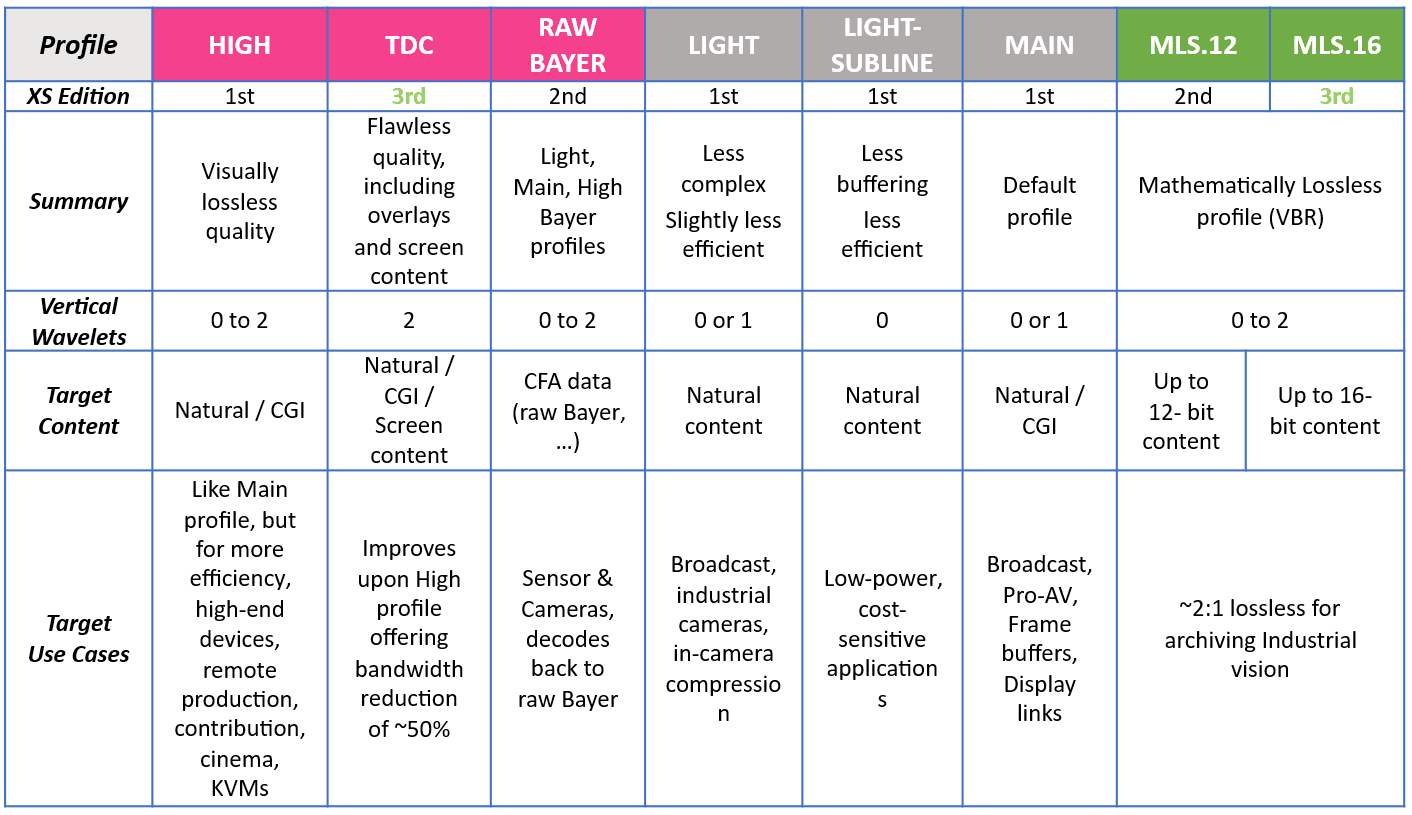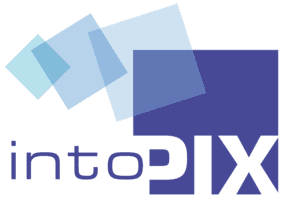JPEG XS profiles, levels, and sublevels – Why are they important?
The actual JPEG XS compression technology is described by Part 1 – Core Coding System. While ISO/IEC 21122-1 specifies a full set of compression coding tools needed to satisfy all the requirements of JPEG XS, a targeted application can often work with a simpler and reduced set of coding tools, and with or without tighter constraints, to meet its targeted goals.
Without profiles, every decoder would be required to implement and support the full set of coding tools and options of the standard to be able to decode any possible codestream configuration it might encounter. This is not desirable and might not even be technical feasible, given the low complexity requirement of JPEG XS. In typical deployments, hardware resources are limited, timing constraints are strict, and latency is expected to be near-zero. Profiles offer a way to indicate compliance between encoders and decoders regarding the supported coding modes and the related configuration parameters.
In addition to profiles, JPEG XS also relies on the concept of levels, sublevels and frame buffer bandwidth levels (FBB-levels). Levels and sublevels provide limits to the maximum throughput in respectively the decoded (spatial or pixel) and the encoded (compressed) domains. Thus, levels and sublevels normatively define the pixel rate and bandwidth limits that a decoding system must support. FBB-levels are only relevant for the TDC-enabled profiles and provide a lower bound at the decoder on the bandwidth of the compressed frame buffer.
In this way, profiles and the three level concepts allow designing cost-efficient implementations that serve the needs of the desired applications. Moreover, they also guarantee future-proof and upgradable interoperability for JPEG XS ecosystems.
All profiles, levels, sublevels and FBB-levels are specified in Part 2 of JPEG XS (ISO/IEC 21122-2). As of 3rd edition, JPEG XS defines 18 profiles, 18 levels, 7 sub-levels, and 4 FBB-levels.
The following table provides an overview of the most prominent profiles, grouped conceptually by main features and complexity.

The High, TDC, and RAW Bayer profile groups are the most commonly used in JPEG XS deployments, depending on the specific use case. They provide visually lossless quality with constant bitrate streams. The Light and Main profile groups are similar to the High profiles but enable significant reductions in computational and memory requirements, albeit with a slight decrease in compression efficiency. Lastly, the MLS profiles offer mathematically lossless compression using a variable bitrate stream.
